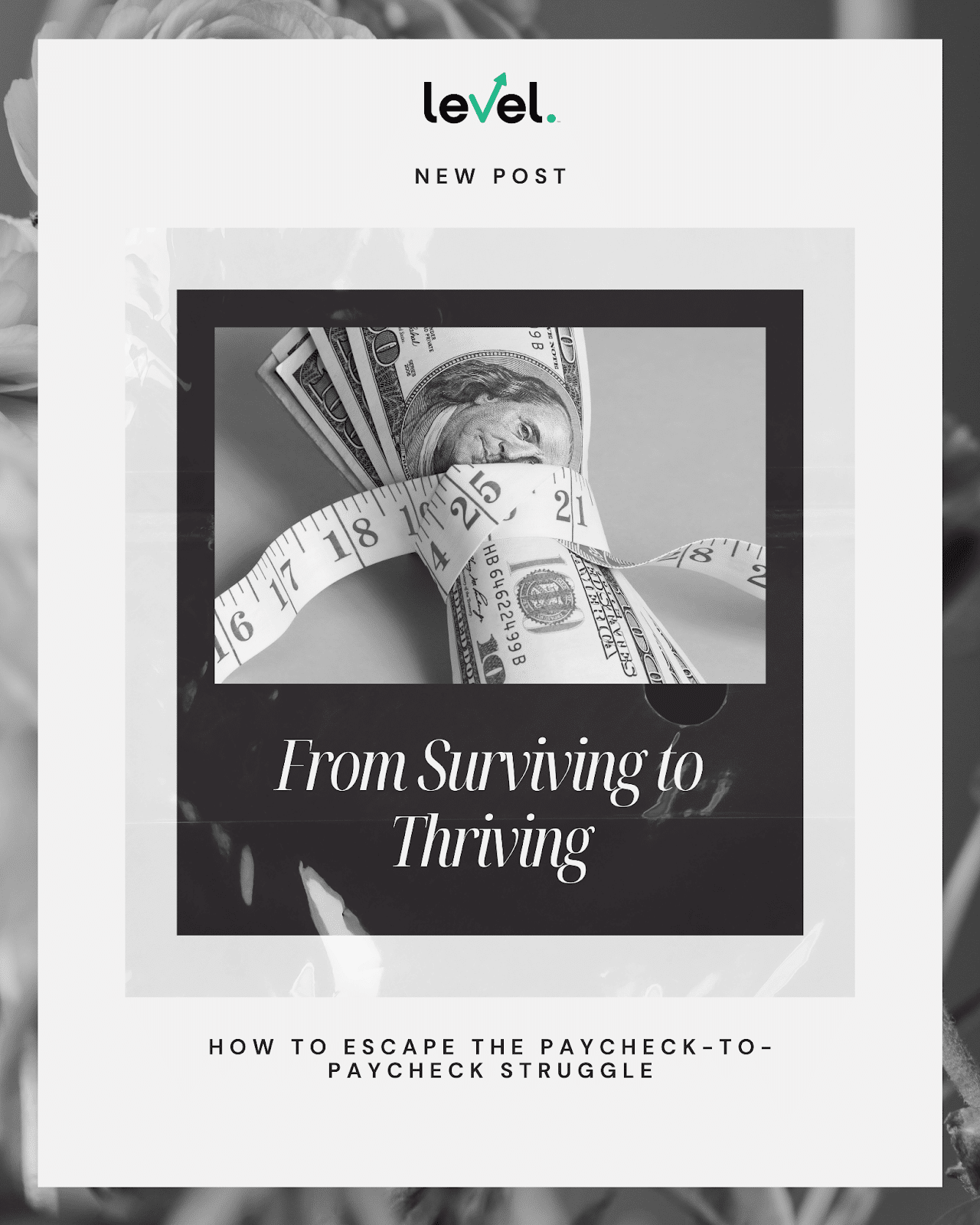
From Surviving to Thriving: How to Escape the Paycheck-to-Paycheck Struggle
Living paycheck to paycheck is a stressful reality for millions of Americans. With rising costs, stagnant wages, and high debt burdens, many people find themselves running out of money before the next payday, leaving little room for savings or emergencies.
If you’re feeling trapped in the cycle of financial instability, you’re not alone—but there are ways to break free. At Level Debt, we help individuals manage their debt and create financial breathing room. Here’s how you can take control of your finances today and start working toward a more stable future.
Step 1: Identify Where Your Money is Going
One of the biggest reasons people struggle financially is that they don’t have a clear understanding of where their money is going.
🔹 Start by tracking every dollar – Use a budgeting app (such as Mint, YNAB, or EveryDollar) or a simple spreadsheet to log your expenses.
🔹 Categorize your spending – Look at how much you’re spending on necessities (rent, utilities, food, debt payments) vs. non-essentials (subscriptions, dining out, impulse purchases).
🔹 Analyze patterns – Are you overspending in certain areas? Are there bills or services you can cut back on?
💡 Pro Tip: If you find it difficult to track expenses manually, set up automatic transaction tracking through a banking app.
Step 2: Create a Realistic Budget
A budget isn’t about restricting yourself—it’s about giving yourself financial clarity and making sure your money is going where it matters most.
How to Build a Budget That Works:
1️⃣ Prioritize the Essentials – Rent/mortgage, utilities, groceries, transportation, and minimum debt payments come first.
2️⃣ Cut Unnecessary Expenses – Identify areas where you can trim spending, like dining out, unused subscriptions, or impulse shopping.
3️⃣ Set Aside Savings (Even If It’s Small) – Start with just $20–$50 per paycheck—every little bit helps in building a safety net.
4️⃣ Use the 50/30/20 Rule –
- 50% Needs (Essentials)
- 30% Wants (Discretionary Spending)
- 20% Savings & Debt Repayment
💡 Pro Tip: If you’re struggling to cover essentials, adjust your budget by reducing discretionary spending or increasing income (Step 4 below).
Step 3: Get a Handle on Your Debt
If a large portion of your paycheck is going toward debt payments, it’s time to find a strategy that reduces your burden.
Debt Management Strategies:
🔹 Avalanche Method – Pay off debts with the highest interest rates first (credit cards, payday loans) to save money in the long run.
🔹 Snowball Method – Pay off the smallest debts first to gain momentum and feel progress.
🔹 Debt Settlement – If you’re overwhelmed by high balances and struggling to make payments, Level Debt can help you negotiate with creditors to reduce what you owe.
💡 Pro Tip: Don’t just make minimum payments—if possible, allocate extra money toward debt to pay it off faster.
📞 Need help managing debt? Call Level Debt today at 888-304-7799 to explore your options.
Step 4: Increase Your Income
If your budget is tight even after cutting expenses, you may need to increase your income to break the paycheck-to-paycheck cycle.
Ways to Boost Your Income:
💰 Ask for a Raise – If you’ve been in your job for a while, now is a good time to negotiate a salary increase.
💰 Start a Side Hustle – Freelancing, gig work (Uber, DoorDash, pet sitting), or selling handmade goods can generate extra cash.
💰 Pick Up a Part-Time Job – Even an extra $100–$200 per week can make a big difference in covering expenses and paying down debt.
💰 Sell Unused Items – Declutter your home and sell things on Facebook Marketplace, eBay, or Poshmark for quick cash.
💡 Pro Tip: If you receive a bonus, tax refund, or side hustle income, use at least half of it toward savings or debt reduction.
Step 5: Build an Emergency Fund (Even If It’s Small)
One of the biggest reasons people stay trapped in the paycheck-to-paycheck cycle is that they don’t have a financial cushion for unexpected expenses.
How to Start an Emergency Fund:
✔️ Start small – Even $500 in savings can prevent you from relying on credit cards for emergencies.
✔️ Set up automatic transfers – Have a small portion of your paycheck automatically deposited into a savings account.
✔️ Use a high-yield savings account – Earn interest on your emergency fund while keeping it easily accessible.
💡 Pro Tip: Once your emergency fund reaches $1,000, aim for 3-6 months’ worth of expenses to create long-term financial security.
Step 6: Stop the Cycle of High-Interest Debt
If you’re constantly relying on credit cards to cover essentials, it’s time to reassess your financial plan.
Avoid Common Debt Traps:
❌ Relying on credit for everyday expenses – This leads to a growing balance that becomes harder to manage.
❌ Applying for new loans without a repayment plan – Taking on more debt without a plan only makes things worse.
❌ Ignoring collection calls & overdue bills – This can harm your financial standing and make debt harder to resolve.
If you’re struggling to keep up, debt settlement may be an option to reduce your balances and lower your payments.
📞 Contact Level Debt today at 888-304-7799 to explore your best debt relief options.
Final Thoughts: Take Control of Your Financial Future
Living paycheck to paycheck can feel like an endless struggle, but small, intentional changes can help you break free.
🔹 Track your spending and cut unnecessary costs.
🔹 Create a budget that prioritizes your needs.
🔹 Reduce high-interest debt through strategic repayment.
🔹 Increase your income through side hustles or career growth.
🔹 Build a savings cushion to handle financial surprises.
At Level Debt, we help individuals take back control by reducing debt and creating a clear financial path forward.
📞 Struggling with debt? Call Level Debt today at 888-304-7799 and take the first step toward financial freedom! 🚀
Written by Nichole Miller
February 2025


